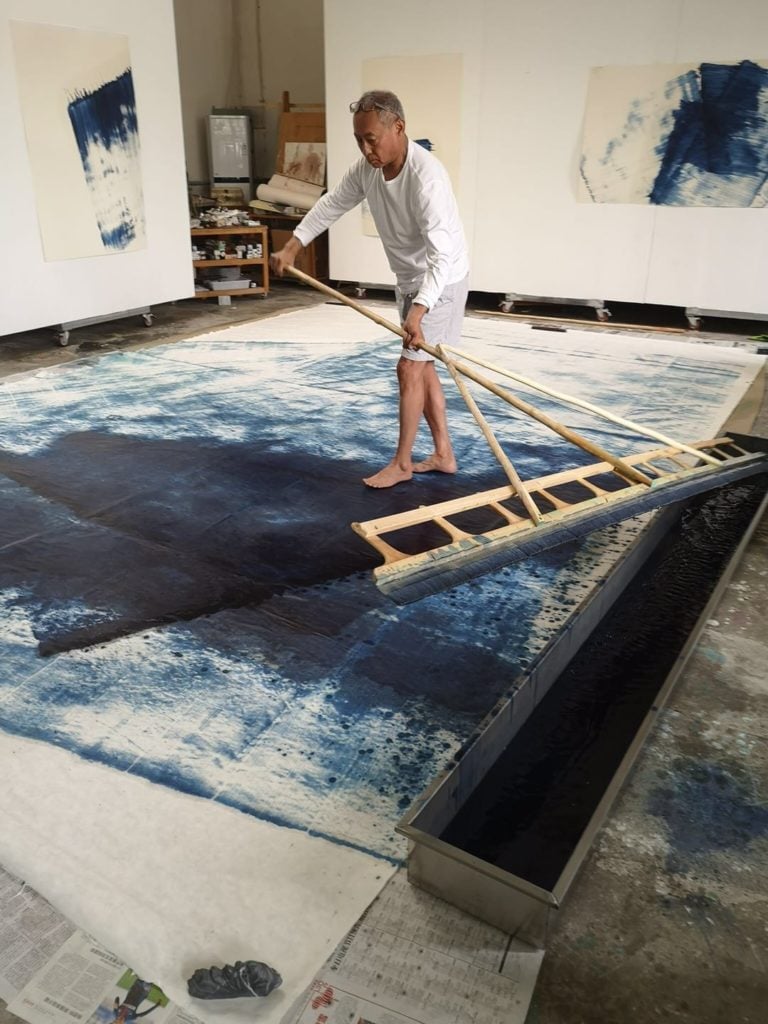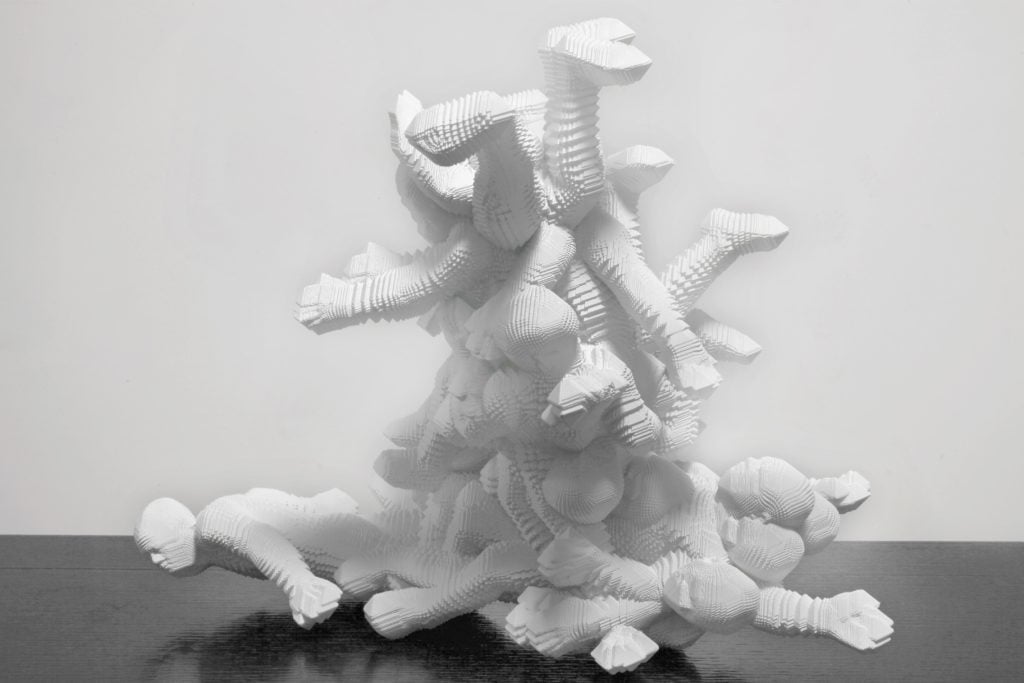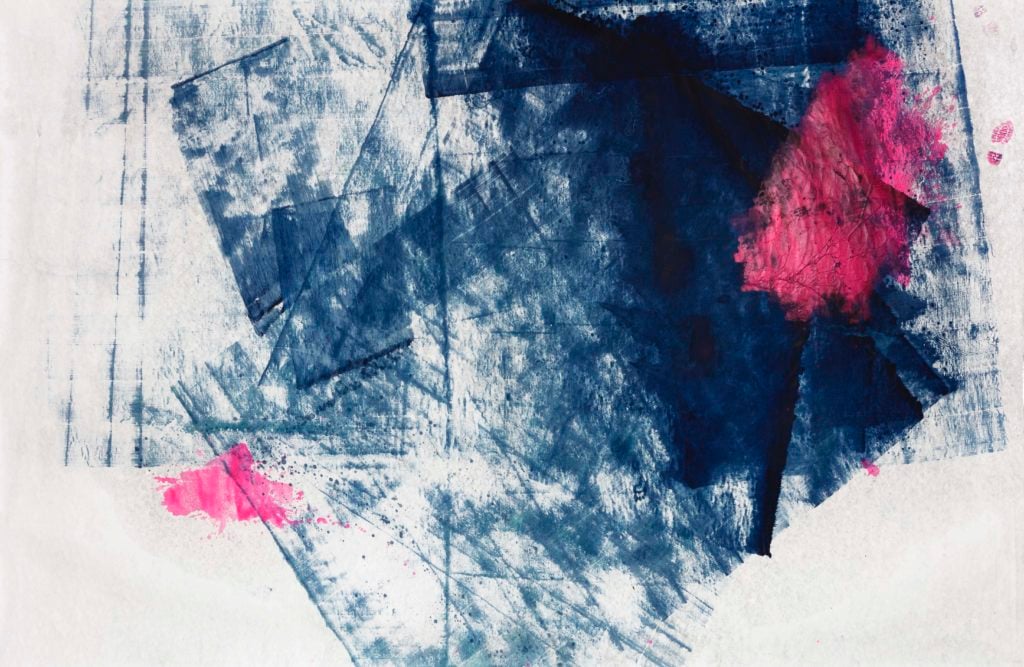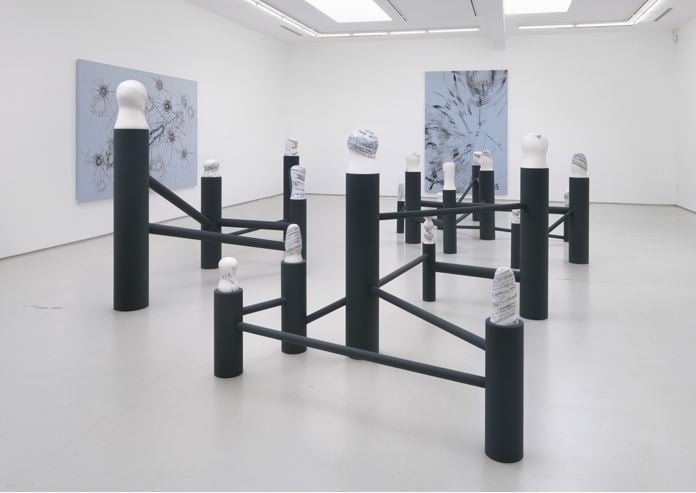How 3 Chinese Artists Are Reinventing Centuries-Old Traditions With Their Latest Bodies of Work


Katie White

With Pace shuttering its doors in Beijing, raging protests in Hong Kong, and the suspicious demolition of two Beijing arts districts underway, the cultural news coming out China these days can seem quite bleak. But amid all the political tumult, Chinese artists are continuing to create challenging new artworks that allude to both contemporary culture and traditions that are many millennia old. We’ve turned the spotlight on three contemporary Chinese artists, each with exhibitions on view this summer.

Miao Xiaochun, Extrude milk equal to a quarter hour (2019). Courtesy of Eli Klein Gallery.
Miao Xiaochun (b. 1964) is considered a central figure in China’s wave of new media art. His current New York solo exhibition brings together an energetic mix of painting, sculpture, and animated video works made over the past decade, many of which explore new technologies, particularly 3D printing. In recent years, Miao has taken a particular interest in our impulse to pixelate or “break down” music into notes, curves into formulas, and so on.
In his new series, “Gyro Dance,” the artist “co-creates” with a vector that fluctuates with the passage of time, using scans of his own body as the model. The influence of Futurist ideals is apparent, both in the work’s relationship to technology and the desire to capture the body in motion. In fact, Miao has named each of the works after passages from Futurism–Surrealism, a Chinese elaboration on Western movements. His new series challenges the idea that the artist will always be the author when it comes to technology—but rather than foreboding, the exhibition is collaborative and lively.
“Miao Xiaochun: Gyro Dance” is on view through July 28, at Eli Klein Gallery, 398 West St, New York

Zhang Wei, Z-KIW1953 (2019). Courtesy of the artist and Galerie Max Hetzler, Berlin | Paris | London.
Beijing painter Zhang Wei (b. 1952) has created an approximately 13 foot-by-19.5 foot abstract painting on one huge sheet of handmade Xuan paper especially for his show at Germany’s Stiftung zur Förderung zeitgenössischer Kunst in Weidingen. The massive sheet will be displayed suspended in the middle of the space’s vaulted exhibition hall, interacting with the changing light from the skylights to create a delicate balance between material and image. Xuan paper is traditional to ancient Chinese landscape painting and calligraphy, but the paper is now only produced in such large scale by one manufacturer, once a year, in Jungian, 750 miles south of Beijing. It requires a complex process involving more than 60 workers.
To make his large-scale paintings, Zhang spreads the precious paper on the floor of his studio and paints with brushes attached to a oversize squeegee and oil-soaked cloths. The process allows for no corrections, channeling both the traditions of calligraphy painting and the influence of the Abstract Expressionists.
“Zhang Wei” is on view from July 28 to August 31 at Stiftung zur Förderung zeitgenössischer Kunst in Weidingen, Gartenstraße 32, D-54636 Weidingen/Südeifel

Installation view of “Zhao Zhao: Control” at Roberts Projects.
In Chinese history, gourds have a rich symbolic and spiritual significance with which the West is largely unfamiliar. In ancient tradition, gourds were dried and then used to store water, wine, and medicine, among other elixirs. Their symmetrical shape was regarded as auspicious, and in Daoism, the form was believed to embody the relationship of the earth to the infinite. In his new exhibition, Zhao Zhao (b. 1982) presents 19 marble sculptures whose shapes are based on wax gourds.
In addition, the artist presents embroidered works from his “Constellation” series, which he collaborated on with his mother after a harrowing car accident. The gourd sculptures are displayed in front of the embroidery on an interconnected series of black columns, which from above, appear like branches of a constellation. The exhibition is a study in the way relationships form, both among humans and in nature. Dating back to the Ming dynasty, molds were created so that gourds would grow into specific shapes. Zhao Zhao’s new body of work seems to ask how our own physical bodies are influenced or changed by today’s realities.
“Zhao Zhao: Control” is on view through August 10 at Roberts Projects, 5801 Washington Boulevard, Los Angeles
